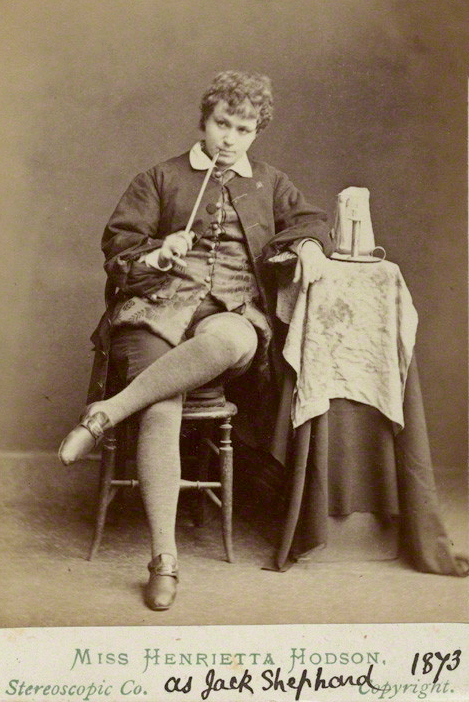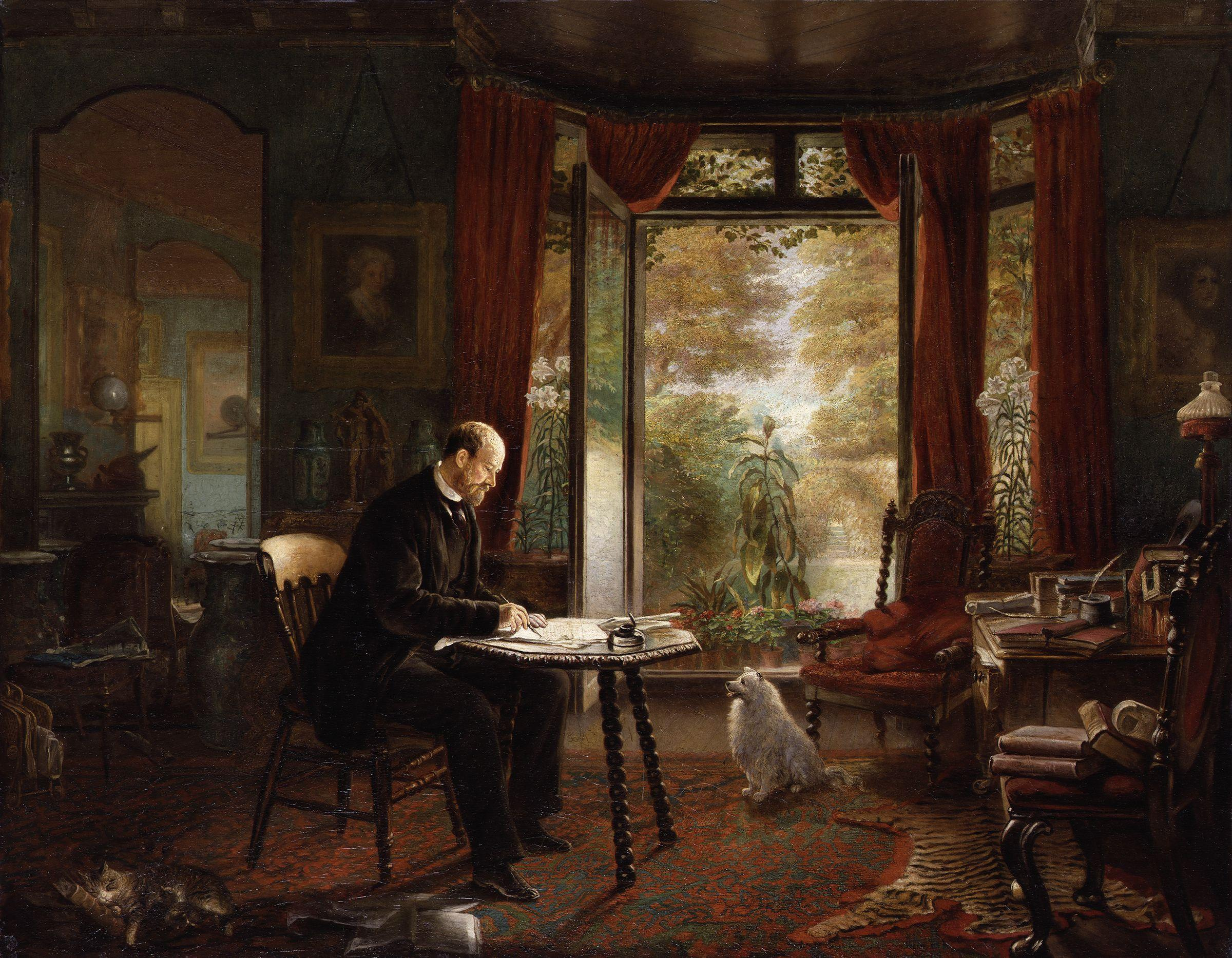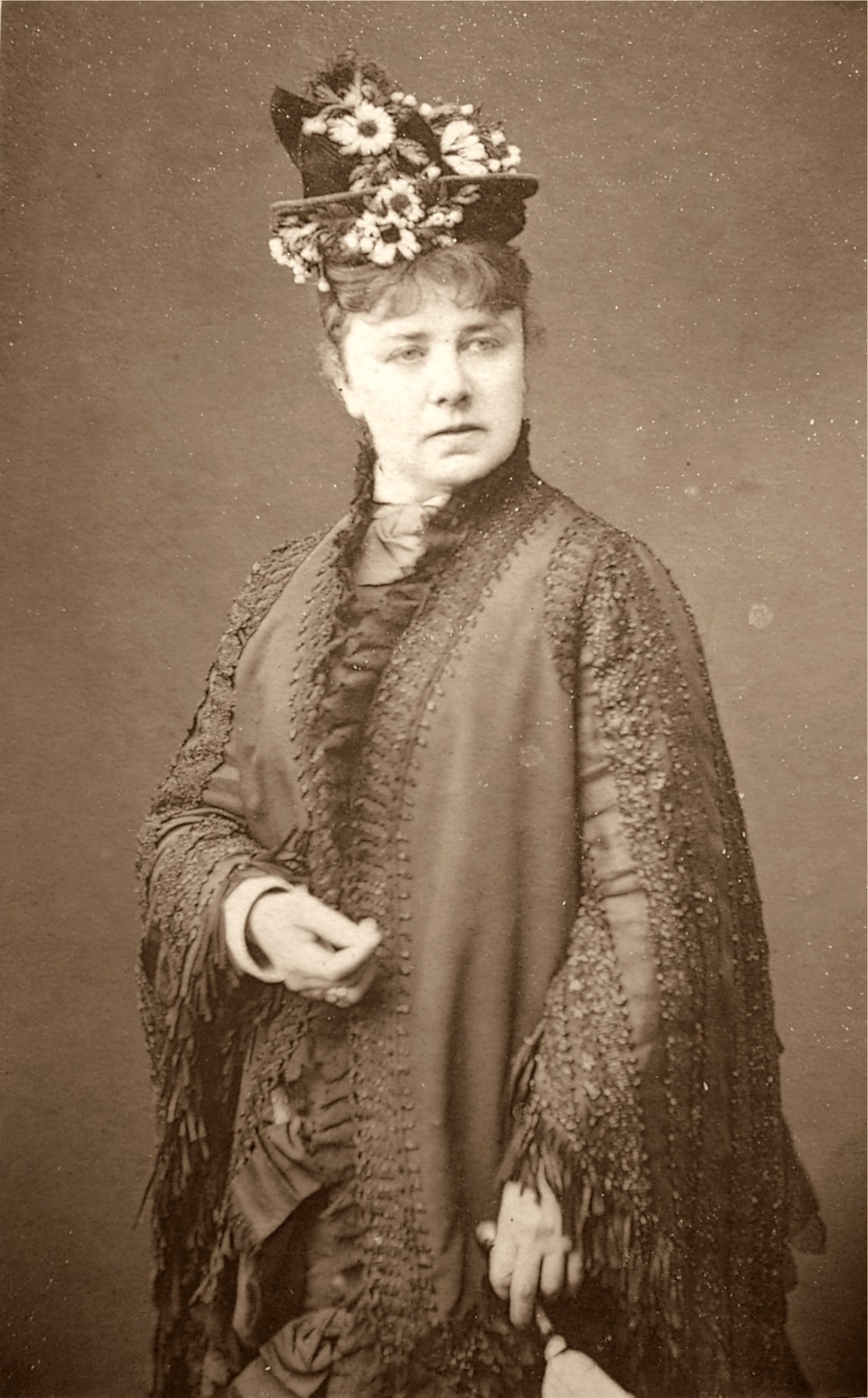|
Henrietta Hodson
Henrietta Ellen Hodson (26 March 1841 – 30 October 1910) was an English actress and theatre manager best known for her portrayal of comedy roles in the Victorian era. She had a long affair with the journalist-turned-politician Henry Labouchère, later marrying him. Biography Hodson was born at Upper Marsh, Lambeth in Surrey in the ecclesiastical parish of St Mary-at-Lambeth. She was the eldest daughter of George Alfred Hodson (1822–1869), an Irish-born comedian, singer and innkeeper, and Henrietta Elizabeth Noel, an actress and singer. Her two sisters, Kate (later Mrs Charles Henry Fenton, but known on stage as Kate Gordon) and Sylvia (Mrs J. Stripling Blythe), were also actresses. Hodson's cousin was the theatre producer George Musgrove. Early career Hodson made her first professional stage appearance at the Theatre Royal, Glasgow, in 1858. In 1860, she and Henry Irving worked together in Manchester in ''The Spy; or, A Government Appointment''. She joined J. H. Ch ... [...More Info...] [...Related Items...] OR: [Wikipedia] [Google] [Baidu] |
Henrietta Hodson 1873
Henrietta may refer to: * Henrietta (given name), a feminine given name, derived from the male name Henry Places * Henrietta Island in the Arctic Ocean * Henrietta, Mauritius * Henrietta, Tasmania, a locality in Australia United States * Henrietta, Missouri * Henrietta, Johnson County, Missouri * Henrietta, New York * Henrietta, Ohio * Henrietta, Pennsylvania * Henrietta, Texas * Henrietta, West Virginia * Henrietta, Wisconsin, a county subdivision ** Henrietta (ghost town), Wisconsin, a ghost town * Henrietta Township: ** Henrietta Township, Michigan ** Henrietta Township, Hubbard County, Minnesota ** Henrietta Township, Lorain County, Ohio ** Henrietta Township, LaMoure County, North Dakota Fictional characters * Henrietta de Tristain a fictional character from the Japanese light novel/anime ''Zero no Tsukaima'' * Henrietta the coach, a fictional character of ''The Railway Series'' * Henrietta (Gunslinger), a fictional character from the Japanese manga/anime ''G ... [...More Info...] [...Related Items...] OR: [Wikipedia] [Google] [Baidu] |
A Midsummer Night's Dream
''A Midsummer Night's Dream'' is a Comedy (drama), comedy play written by William Shakespeare in about 1595 or 1596. The play is set in Athens, and consists of several subplots that revolve around the marriage of Theseus and Hippolyta. One subplot involves a conflict among four Athenian lovers. Another follows a group of six amateur actors rehearsing the play which they are to perform before the wedding. Both groups find themselves in a forest inhabited by fairies who manipulate the humans and are engaged in their own domestic intrigue. ''A Midsummer Night's Dream'' is one of Shakespeare's most popular and widely performed plays. Characters The Athenians: * Theseus – Duke of Athens * Hippolyta – Queen of the Amazons and Theseus' fianceé * Hermia – in love with Lysander * Helena (A Midsummer Night's Dream), Helena – in love with Demetrius * Lysander (A Midsummer Night's Dream), Lysander – in love with Hermia * Demetrius (A Midsummer Night's Dream), Demetrius – s ... [...More Info...] [...Related Items...] OR: [Wikipedia] [Google] [Baidu] |
Tom Taylor
Tom Taylor (19 October 1817 – 12 July 1880) was an English dramatist, critic, biographer, public servant, and editor of Punch (magazine), ''Punch'' magazine. Taylor had a brief academic career, holding the professorship of English literature and language at University of London, University College, London in the 1840s, after which he practised law and became a civil servant. At the same time he became a journalist, most prominently as a contributor to, and eventually editor of, ''Punch'', a humour magazine. In addition to these vocations, Taylor began a theatre career and became best known as a playwright, with up to 100 plays staged during his career. Many were adaptations of French plays, but these and his original works cover a range from farce to melodrama. Most fell into neglect after Taylor's death, but ''Our American Cousin'' (1858), which achieved great success in the 19th century, remains famous as the piece that was being performed in the presence of Abraham Linco ... [...More Info...] [...Related Items...] OR: [Wikipedia] [Google] [Baidu] |
Robert Reece
Robert Reece (2 May 1838 – 8 July 1891) was a British comic playwright and librettist active in the Victorian era. He wrote many successful musical burlesques, comic operas, farces and adaptations from the French, including the English-language adaptation of the operetta '' Les cloches de Corneville'', which became the longest-running piece of musical theatre in history up to that time. He sometimes collaborated with Henry Brougham Farnie or others. Early life and career Reece was born in the island of Barbados, West Indies. His father, Robert Reece (1808–1874), was a barrister of the Inner Temple. Reece matriculated from Balliol College, Oxford in 1857 and received his B.A. in 1860 and his M.A. in 1864. He was admitted a student at the Inner Temple in 1860 but was not called to the bar. For a short time he was a medical student. Between 1861 and 1863, he was an extra clerk in the office of the ecclesiastical commissioners, and from 1864 to 1868 an extra temporary cle ... [...More Info...] [...Related Items...] OR: [Wikipedia] [Google] [Baidu] |
La Vivandière (Gilbert)
''La Vivandière; or, True to the Corps!'' is a burlesque by W. S. Gilbert, described by the author as "An Operatic Extravaganza Founded on Donizetti's opera, '' La figlia del regimento''." In the French or other continental armies a vivandière was a woman who supplied food and drink to troops in the field. The piece was first produced at St. James's Hall, Liverpool, on 15 June 1867. It was then presented in London, with a mostly new cast, at the Queen's Theatre, Long Acre, opening on 22 January 1868. It was part of a series of operatic burlesques and other broad comic pieces that Gilbert wrote in the late 1860s near the beginning of his playwriting career. It was modestly successful and introduced some themes and satiric techniques that Gilbert would later employ in his famous Savoy operas. Background and analysis Gilbert's first operatic burlesque, '' Dulcamara, or the Little Duck and the Great Quack'', had been successful enough to encourage him to write another. It had ... [...More Info...] [...Related Items...] OR: [Wikipedia] [Google] [Baidu] |
Extravaganza
An extravaganza is a literary or musical work (often musical theatre) usually containing elements of Victorian burlesque, and pantomime, in a spectacular production and characterized by freedom of style and structure. The term is derived from the Italian word ''stravaganza'', meaning extravagance. It sometimes also has elements of music hall, cabaret, circus, revue, variety, vaudeville and mime. ''Extravaganza'' came, in the 20th century, to more broadly refer to an elaborate, spectacular, and expensive theatrical production. Professor Carolyn Wiliams writes that playwrights, producers and critics have often muddled the distinction between burlesque and extravaganza, but she describes the genre this way: "Sexy yet free of "offensive vulgarity", silly yet intelligent, raucus yet spectacularly beautiful, extravaganza was a relatively "high" form of burlesque, intended for an urbane adult audience." She notes that the definition of extravaganza changed during the 19th century, in ... [...More Info...] [...Related Items...] OR: [Wikipedia] [Google] [Baidu] |
Charles Reade
Charles Reade (8 June 1814 – 11 April 1884) was a British novelist and dramatist, best known for the 1861 historical novel '' The Cloister and the Hearth''. Life Charles Reade was born at Ipsden, Oxfordshire, to John Reade and Anne Marie Scott-Waring, and had at least four brothers. He studied at Magdalen College, Oxford, taking his B.A. in 1835, and became a fellow of his college. He was subsequently dean of arts and vice-president, taking his degree of D.C.L. in 1847. His name was entered at Lincoln's Inn in 1836; he was elected Vinerian Fellow in 1842, and was called to the bar in 1843.Edwards, P.D. "Charles Reade." ''Oxford Dictionary of National Biography.'' He kept his fellowship at Magdalen all his life but, after taking his degree, he spent most of his time in London. William Winwood Reade, the influential historian, was his nephew. Writings Reade began his literary career as a dramatist, and he chose to have "dramatist" stand first in the list of his occupations on ... [...More Info...] [...Related Items...] OR: [Wikipedia] [Google] [Baidu] |
Queen's Theatre, Long Acre
The Queen's Theatre was a London theatre established in 1867 on the site of St Martin's Hall, a large concert room that had opened in 1850. It stood on the corner of Long Acre (formerly Charles Street) and Endell Street, with entrances in Wilson Street and Long Acre. The site is within the modern Camden, part of Covent Garden.Walter Thornbury ''Old and New London: A Narrative of its History, its People and its Places. Illustrated with Numerous Engravings from the Most Authentic Sources.: Volume 3'' accessed 1 April 2008 St Martin's Hall contained a 3,000-seat main hall and a 500-seat lecture hall. It was used for musical reci ... [...More Info...] [...Related Items...] OR: [Wikipedia] [Google] [Baidu] |
Lionel Brough
Lionel "Lal" Brough (10 March 1836 – 8 November 1909) was a British actor and comedian. After beginning a journalistic career and performing as an amateur, he became a professional actor, performing mostly in Liverpool during the mid-1860s. He established his career in London as a member of the company at the new Queen's Theatre, Long Acre, in 1867, and he soon became known for his roles in Shakespeare, contemporary comedies, and classics, especially as Tony Lumpkin in ''She Stoops to Conquer''. In the 1870s and 1880s, Brough was one of the leading comic actors in London. Although untrained musically, he also appeared in several successful operettas in the 1880s and 1890s. He continued to contribute popular performances into the 20th century and ended his career in comedy roles with Herbert Beerbohm Tree's company. Biography Early years Brough was born in Pontypool, Wales, the son of Barnabas Brough, a brewer, publican, wine merchant and later dramatist, and his wife Franc ... [...More Info...] [...Related Items...] OR: [Wikipedia] [Google] [Baidu] |
Charles Wyndham (actor)
Sir Charles Wyndham (23 March 1837 – 12 January 1919), ''né'' Charles Culverwell, was an English actor and theatre proprietor. Wyndham's Theatre in London is named after him, and he also built the Noël Coward Theatre, New Theatre (now the Noël Coward Theatre) nearby. Wyndham's family intended him for a medical career, and he studied medicine while enthusiastically engaging in amateur theatricals in his spare time. Torn between medicine and the stage, he spent three years in the US as a surgeon in the Union army in the American Civil War and on two occasions acted unsuccessfully on the New York stage. After returning to Britain and establishing himself as an actor he made further trips to the US between 1882 and 1910, playing in theatres all around the country. In London, Wyndham became known for his comic skills, both in light comedy and farce. He took over the management of the Criterion Theatre in 1876 and remained in charge there for more than 20 years. "Criterion f ... [...More Info...] [...Related Items...] OR: [Wikipedia] [Google] [Baidu] |
Marie Wilton
Marie Effie Wilton, Lady Bancroft (1836–1921) was an English actress and Actor-manager, theatre manager. She appeared onstage as Marie Wilton until after her marriage in December 1867 to Squire Bancroft, when she adopted his last name. Bancroft and her husband were important in the development of Victorian era theatre through their presentation of innovative plays at the London theatres that they managed, first the Prince of Wales's Theatre and later the Haymarket Theatre. Life and career Bancroft was born at Doncaster, and as a child appeared on the stage with her parents, who were both actors. Although her birth date is usually given as 1839, in fact she was born in 1836; she appeared as a 6-year-old at the Theatre Royal, Norwich, Norwich Theatre on 14 May 1842, reciting a 120-line poem from memory. (In her autobiography Bancroft characteristically took a year off her age, claiming "At the age of five I recited William Collins (poet), Collins's ''Ode to the Passions''".) Am ... [...More Info...] [...Related Items...] OR: [Wikipedia] [Google] [Baidu] |
Prince Of Wales's Theatre
The Scala Theatre was a theatre in Charlotte Street, London, off Tottenham Court Road. The first theatre on the site opened in 1772; the last was demolished in 1969, after a catastrophic fire. From 1865 to 1882, the theatre was known as the Prince of Wales's Theatre (not to be confused with Prince of Wales Theatre). Origins The theatre began on this site as The New Rooms where concerts were performed, in Charlotte Street, in 1772, under the management of Francis Pasquali. Popularity, and royal patronage led to the building's enlargement by James Wyatt, and its renaming as the King's Concert Rooms (1780–1786). It then became Rooms for Concerts of Ancient Music and Hyde's Rooms (1786–1802), managed by ''The Directors of Concerts and Ancient Music''. In 1802, a private theatre club managed by Captain Caulfield, the ''"Pic-Nics"'', occupied the building and named it the Cognoscenti Theatre (1802–1808). It became the New Theatre (1808–1815) and was extended and fitted o ... [...More Info...] [...Related Items...] OR: [Wikipedia] [Google] [Baidu] |








